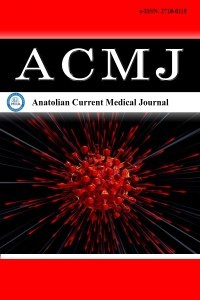1.
Comabella M, Khoury SJ. Immunopathogenesis of multiplesclerosis. Clin Immunol. 2012;142(1):2-8.
2.
Kamm CP, Uitdehaag BM, Polman CH. Multiple sclerosis:current knowledge and future outlook. Eur Neurol. 2014;72(3-4):132-141.
3.
Golan D, Staun-Ram E, Glass-Marmor L, et al. The influence ofvitamin D supplementation on melatonin status in patients withmultiple sclerosis. Brain Behav Immun. 2013;32:180-185.
4.
Gilgun-Sherki Y, Melamed E, Offen D. The role of oxidative stressin the pathogenesis of multiple sclerosis: the need for effectiveantioxidant therapy. J Neurol. 2004;251(3):261-268.
5.
Korkmaz A, Reiter RJ, Topal T, Manchester LC, Oter S, Tan DX.Melatonin: an established antioxidant worthy of use in clinicaltrials. Mol Med. 2009;15(1):43-50.
6.
Cote I, Trojan DA, Kaminska M, et al. Impact of sleepdisorder treatment on fatigue in multiple sclerosis. Mult Scler.2013;19(4):480-489.
7.
Hagan RM, Oakley NR. Melatonin comes of age? TrendsPharmacol Sci. 1995;16(3):81-83.
8.
Kurtzke JF. Rating neurologic impairment in multiplesclerosis: an expanded disability status scale (EDSS). Neurol.1983;33(11):1444-1452.
9.
Krupp LB, LaRocca NG, Muir-Nash J, Steinberg AD. The fatigueseverity scale: application to patients with multiple sclerosis andsystemic lupus erythematosus. Arch Neurol. 1989;46(10):1121-1123.
10.
Agargun M. Pittsburgh uyku kalitesi indeksinin gecerligi veguvenirligi. Turk Psikiyatri Derg. 1996;7:107-115.
11.
Izci B, Ardic S, Firat H, Sahin A, Altinors M, Karacan I. Reliabilityand validity studies of the Turkish version of the Epworthsleepiness scale. Sleep Breath. 2008;12(2):161-168.
12.
Boysan M, Güleç M, Besiroglu L, Kalafat T. Uykusuzluk şiddetiindeksi’nin Türk örneklemindeki psikometrik özellikleri.Anadolu Psikiyatri Derg. 2010;11(3):248-252.
13.
Hisli N. Beck Depresyon envanterinin gecerliligi uzerine bitcalisma (a study on the validity of Beck depression inventory.).Psikol Derg. 1988;6:118-122.
14.
Anisimov VN, Popovich IG, Zabezhinski MA, Anisimov SV,Vesnushkin GM, Vinogradova IA. Melatonin as antioxidant,geroprotector and anticarcinogen. Biochim Biophys Acta. 2006;1757(5-6):573-589.
15.
Ohkawa H, Ohishi N, Yagi K. Assay for lipid peroxides in animaltissues by thiobarbituric acid reaction. Anal Biochem. 1979;95(2):351-358.
16.
Khanzode SD, Dakhale GN, Khanzode SS, Saoji A, PalasodkarR. Oxidative damage and major depression: the potentialantioxidant action of selective serotonin re-uptake inhibitors.Redox Rep. 2003;8(6):365-370.
17.
Smolders J, Peelen E, Thewissen M, et al. The relevance ofvitamin D receptor gene polymorphisms for vitamin D researchin multiple sclerosis. Autoimmun Rev. 2009;8(7):621-626.
18.
Sakkas GK, Giannaki CD, Karatzaferi C, Manconi M. Sleepabnormalities in multiple sclerosis. Curr Treat Options Neurol.2019;21(1):4.
19.
Haider L, Fischer MT, Frischer JM, et al. Oxidative damage inmultiple sclerosis lesions. Brain. 2011;134(7):1914-1924.
20.
Ferretti G, Bacchetti T. Peroxidation of lipoproteins in multiplesclerosis. J Neurol Sci. 2011;311(1-2):92-97.
21.
Adamczyk-Sowa M, Sowa P, Pierzchala K, Polaniak R, Labuz-Roszak B. Antioxidative enzymes activity and malondialdehydeconcentration during mitoxantrone therapy in multiple sclerosispatients. J Physiol Pharmacol. 2012;63(6):683-690.
22.
Tasset I, Agüera E, Sánchez-López F, et al. Peripheral oxidativestress in relapsing-remitting multiple sclerosis. Clin Biochem.2012;45(6):440-444.
23.
Hedström AK, Åkerstedt T, Hillert J, Olsson T, Alfredsson L. Shiftwork at young age is associated with increased risk for multiplesclerosis. Ann Neurol. 2011;70(5):733-741.
24.
Adamczyk-Sowa M, Pierzchala K, Sowa P, Polaniak R, KuklaM, Hartel M. Influence of melatonin supplementation on serumantioxidative properties and impact of the quality of life inmultiple sclerosis patients. J Physiol Pharmacol. 2014;65(4):543-550.
25.
McCord JM. Human disease, free radicals, and the oxidant/antioxidant balance. Clin Biochem. 1993;26(5):351-357.
26.
Kostoglou-Athanassiou I. Therapeutic applications of melatonin.Ther Adv Endocrinol Metab. 2013;4(1):13-24.
27.
Wurtman RJ, Zhdanova I. Improvement of sleep quality bymelatonin. Lancet. 1995;346(8988):1491.
28.
Ebers GC. Environmental factors and multiple sclerosis. LancetNeurol. 2008;7(3):268-277.
29.
Emre U, Ergün U, Yıldız H, Coşkun Ö, İnan L. Multipl sklerozdadepresyon. Düşünen Adam. 2003;16(1):53-56.

